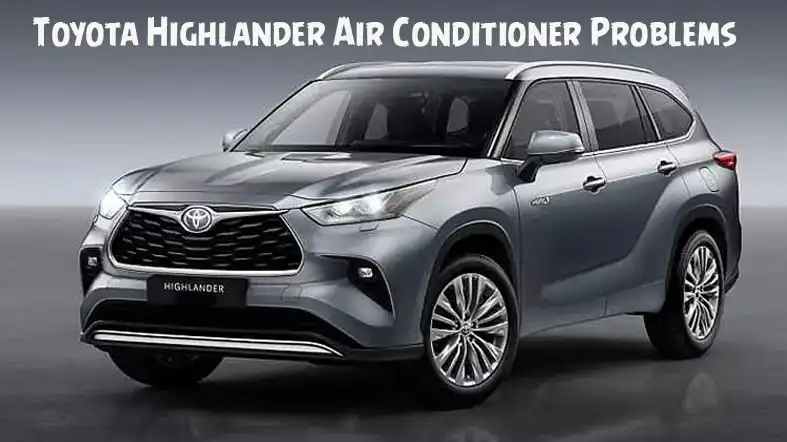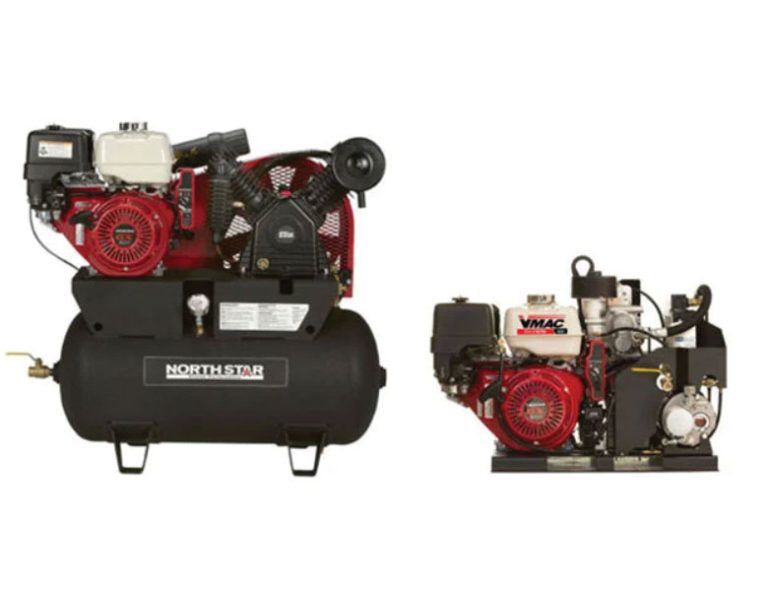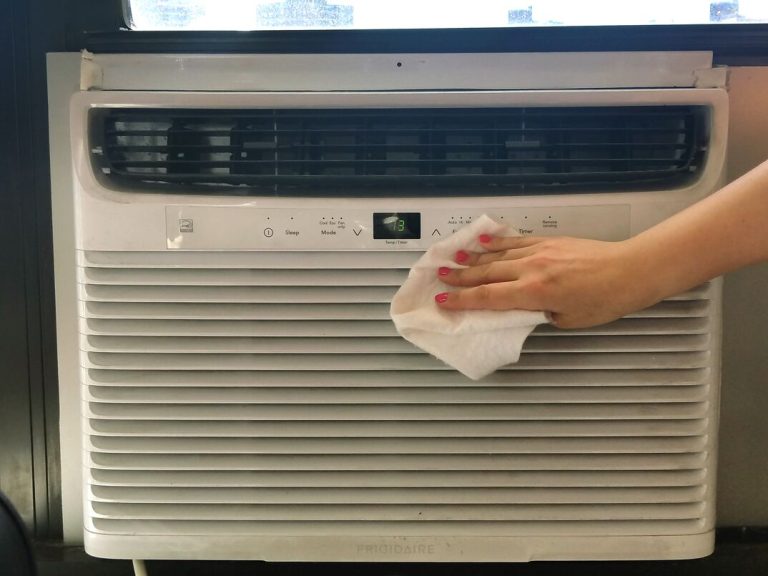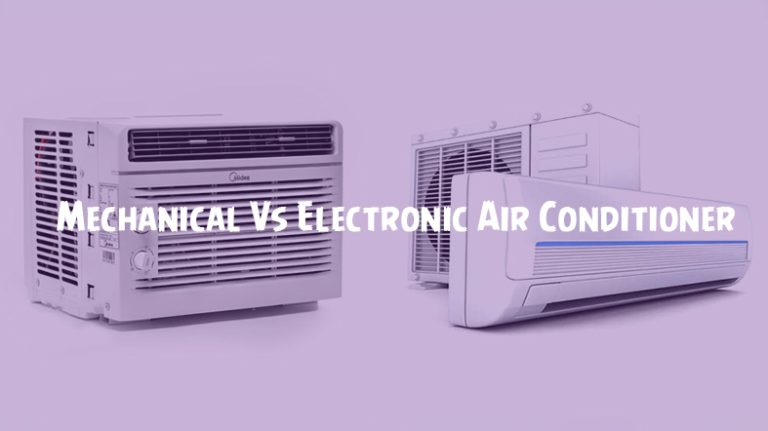Toyota Highlander Air Conditioner Problems | Troubleshooting and Solutions
Driving in a Toyota Highlander offers a blend of comfort and style, but like any vehicle, it can occasionally throw a curveball your way. One common source of frustration for Highlander owners is the air conditioning system. It’s a sweltering summer day, and you turn on your Highlander’s AC, only to be greeted with warm air or strange odors.
In this comprehensive guide, we’ll delve into the nitty-gritty of Toyota Highlander air conditioner problems and equip you with solutions and maintenance tips to keep your cool.

Common Toyota Highlander Air Conditioner Problems
1. Weak or Warm Air
You’re cruising along, and the sun’s relentless rays are beating down on your car. You expect a blast of refreshing cool air, but instead, you get lukewarm breaths. What gives?
Highlander ACs are known for their efficiency, but weak or warm air can be a symptom of several issues.
It might be a clogged cabin air filter, a malfunctioning compressor, or low refrigerant levels. Let’s explore these possibilities further.
2. Strange Odors
As you switch on your Highlander’s AC, an unpleasant odor engulfs the cabin. It’s not the sweet scent of success you were hoping for, but rather, a funky surprise. What’s causing this olfactory assault?
Strange odors emanating from the AC can be caused by mold or mildew growth within the system. This can happen due to moisture buildup in the evaporator core or dirty cabin air filters. It’s essential to identify the source of the stench and address it promptly.
3. Unusual Noises
Silence is golden, they say, but when it comes to your Highlander’s AC, unusual noises can make you wish for a quieter drive. The clunks, rattles, and hisses can be downright unnerving. What’s making your AC serenade you with these symphonies of chaos?
Unusual AC noises can signify various problems, from loose or damaged components to debris in the blower fan. Identifying the noise and its source is crucial to pinpointing the issue accurately.
4. AC Not Blowing Air
You hit the AC button, and adjust the temperature, and yet, there’s not a whisper of air coming from the vents. Your Highlander seems to be in a no-breeze zone. What’s causing this complete lack of airflow?
When your AC refuses to blow air, it could be due to a malfunctioning blower motor, a blown fuse, or even a faulty thermostat. Diagnosing the root cause is the first step toward restoring the airflow.
5. Temperature Fluctuations
Your Highlander’s AC seems to have a mind of its own, oscillating between Arctic chill and Sahara heat. This constant battle for temperature control can be disconcerting. What’s behind these frustrating fluctuations?
Temperature irregularities can be attributed to issues with the thermostat, refrigerant levels, or the compressor clutch. Understanding these factors is essential for maintaining a consistently comfortable cabin climate.
Solutions and Maintenance Tips
1. Recharging the Refrigerant
When your Highlander’s AC is blowing warm air, low refrigerant levels could be the culprit. Refrigerant is the lifeblood of your AC system, responsible for cooling the air. If it’s running low, you can recharge it yourself using a refrigerant kit. However, if you’re not confident in your DIY skills, it’s best to consult a professional to avoid overcharging or undercharging.
2. Cleaning or Replacing the Cabin Air Filter
The cabin air filter is your first line of defense against odors and contaminants. If you’re greeted by foul smells, a clogged filter might be the issue. Thankfully, this is a straightforward fix. Locate the filter (typically behind the glove compartment) and either clean or replace it. This simple step can significantly improve the air quality inside your Highlander.
3. Checking for Refrigerant Leaks
Low refrigerant levels can lead to weak AC performance. To address this, you’ll need to check for refrigerant leaks. This is a job best left to professionals, as they have the necessary equipment and expertise to pinpoint and repair leaks accurately. Attempting to fix refrigerant leaks yourself can be risky and may result in further damage.
4. Inspecting the AC Compressor
The AC compressor is the heart of your cooling system, and any issues here can spell trouble. If you hear unusual noises or experience temperature fluctuations, it’s wise to have the compressor inspected. This is a complex component, and any repairs or replacements should be done by experienced technicians.
5. Addressing Electrical Issues
If your AC isn’t blowing air, it could be due to electrical problems. Check the fuses and relays related to the AC system and replace any that are blown. If this doesn’t solve the issue, consult a professional to diagnose and repair electrical faults. Electrical work can be intricate, so it’s best to entrust it to those with the right expertise.
When to Seek Professional Help
While some AC issues can be resolved with DIY efforts, others require the expertise of a trained mechanic. It’s advisable to seek professional help in the following situations:
Refrigerant leaks: Identifying and repairing refrigerant leaks should be left to professionals due to the specialized equipment and knowledge required.
Compressor issues: AC compressor problems are intricate and best handled by experienced technicians.
Electrical faults: Troubleshooting and repairing electrical problems in your AC system can be complex, making professional intervention necessary.
Unclear diagnosis: If you’re unsure about the cause of your AC problem or your DIY efforts haven’t resolved it, consulting a professional is the safest course of action.
Preventive Measures to Avoid AC Problems
Prevention is often more straightforward and cost-effective than dealing with AC problems after they occur. Here are some preventive measures to keep your Highlander’s AC in top shape:
Regular maintenance: Schedule routine AC inspections and maintenance to catch potential issues before they escalate.
Keep the cabin clean: A clean cabin reduces the risk of mold and mildew growth that can cause odors.
Protect from debris: Use sunshades and keep windows closed when parked to minimize debris in the AC system.
Use the AC regularly: Running the AC periodically, even in cooler months, helps keep it in working order.
Maintain proper refrigerant levels: Ensure your AC always has the right amount of refrigerant to operate efficiently.
FAQs – Frequently Asked Questions and Answers
Q1: What causes my Toyota Highlander’s air conditioner to blow warm air?
A1: Several factors, such as low refrigerant levels, a clogged cabin air filter, or a malfunctioning compressor, can result in warm air blowing from your AC. Proper diagnosis is essential to identify the root cause.
Q2: Why does my Highlander’s AC emit strange odors?
A2: Strange odors often stem from mold or mildew growth in the AC system, typically due to moisture buildup or dirty cabin air filters.
Q3: What are the unusual noises I should watch out for in my AC system?
A3: Unusual AC noises can range from clunks and rattles to hissing sounds. These noises may indicate loose or damaged components, debris in the blower fan, or other issues.
Q4: My Highlander’s AC is not blowing any air. What could be the problem?
A4: AC airflow issues can result from a malfunctioning blower motor, blown fuse, or faulty thermostat. Diagnosing the specific cause is essential to restore airflow.
Q5: How can I prevent temperature fluctuations in my AC system?
A5: Temperature fluctuations can be caused by thermostat issues, low refrigerant levels, or compressor clutch problems. Regular AC maintenance can help prevent these fluctuations.
Q6: Is it possible to recharge the refrigerant in my Highlander’s AC on my own?
A6: Yes, you can recharge the refrigerant yourself using a refrigerant kit, but it’s essential to follow instructions carefully. If you’re unsure, consult a professional.
Q7: How often should I clean or replace the cabin air filter?
A7: Cabin air filters should be cleaned or replaced at regular intervals, typically every 15,000 to 30,000 miles, or as recommended in your vehicle’s manual.
Q8: What signs indicate a refrigerant leak in the AC system?
A8: Signs of a refrigerant leak may include reduced cooling performance, hissing noises, or visible oil stains around AC components. If you suspect a leak, consult a professional.
Q9: How can I tell if there’s a problem with the AC compressor?
A9: AC compressor issues can manifest as unusual noises, temperature fluctuations, or complete AC system failure. Professional inspection is necessary to diagnose and address compressor problems.
Q10: When should I seek professional help for my Toyota Highlander’s air conditioner issues?
A10: It’s advisable to seek professional help when dealing with refrigerant leaks, compressor issues, electrical faults, or when you’re unsure about the diagnosis or solution for your AC problem. Professionals have the expertise and tools to address complex AC issues effectively.
Conclusion
Your Toyota Highlander’s air conditioner should be a source of comfort, not frustration. By understanding the common problems and solutions outlined in this guide, you’ll be better equipped to tackle AC issues when they arise. Remember, regular maintenance and prompt attention to problems can keep your Highlander’s AC running smoothly, ensuring you stay cool and comfortable on the road.



![Air Conditioner Making Rattling Noise [Causes & Solution]](https://airanswer.com/wp-content/uploads/2023/07/Air-Conditioner-Making-Rattling-Noise-1-768x431.jpg)

![Does Topgolf Have Air Conditioning [Answewred & Explained]](https://airanswer.com/wp-content/uploads/2023/08/Does-Topgolf-Have-Air-Conditioning-768x591.jpg)